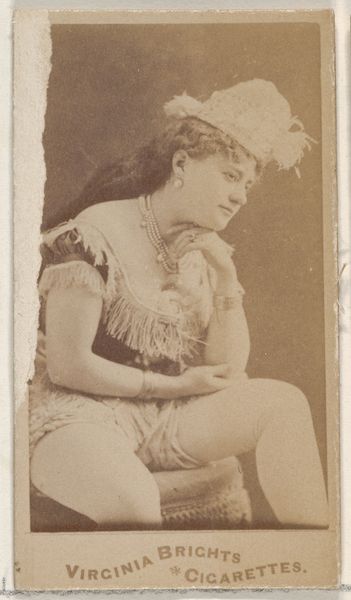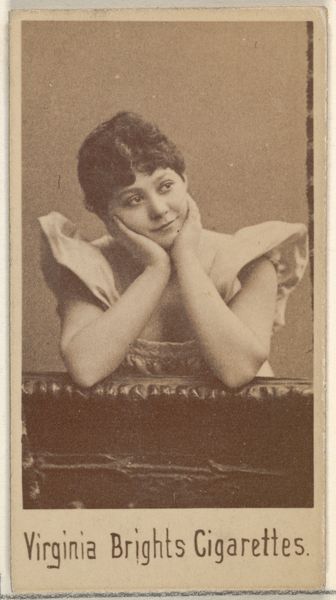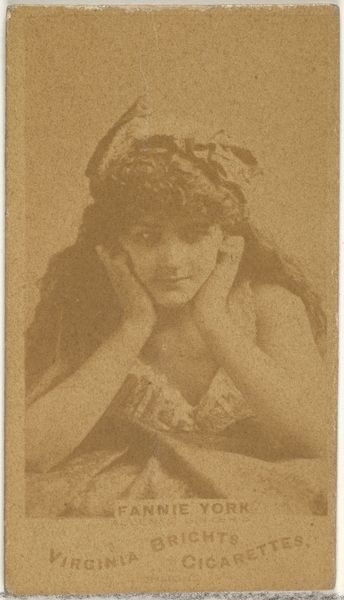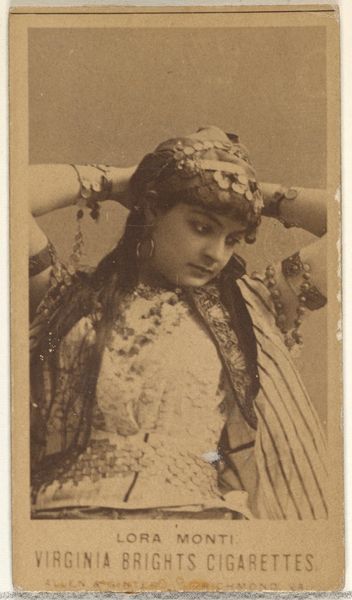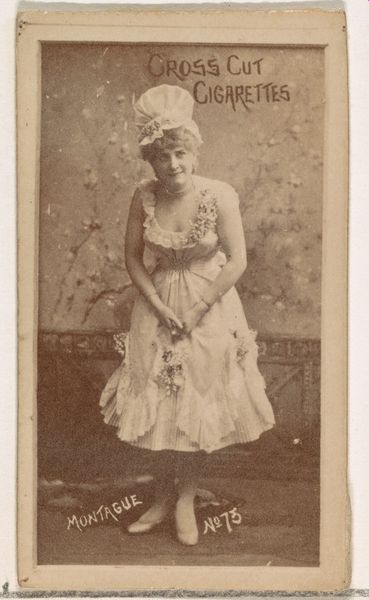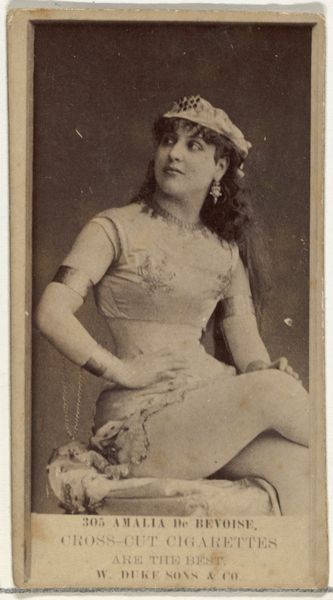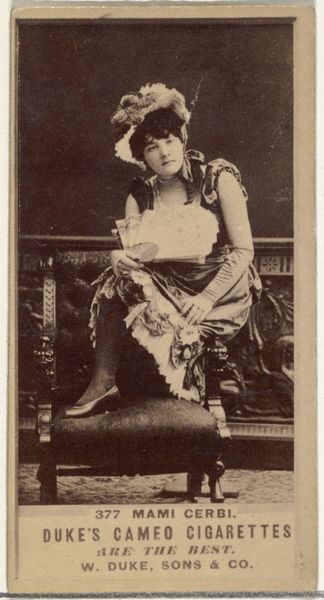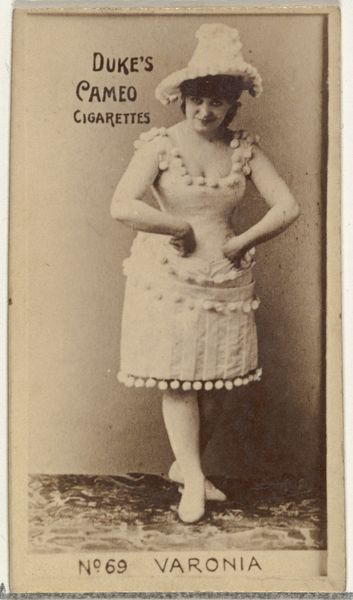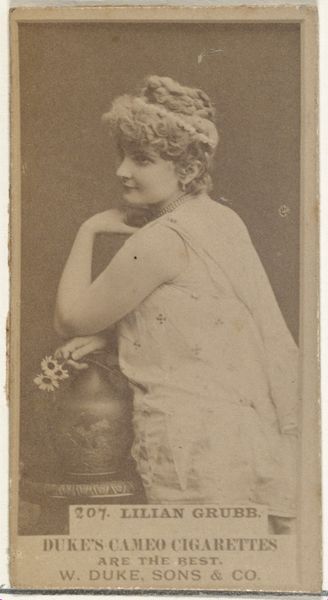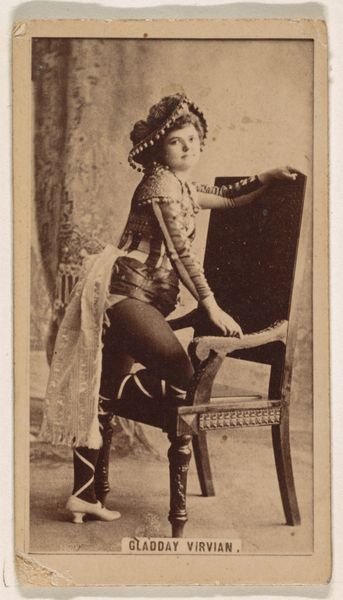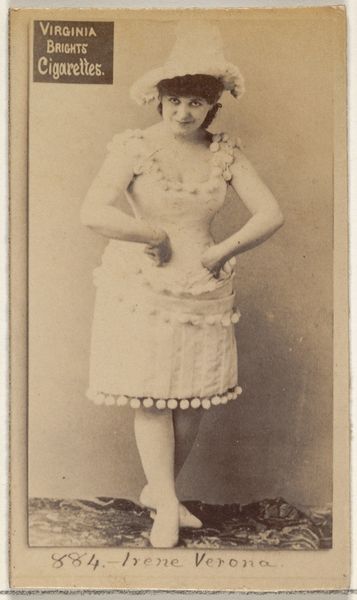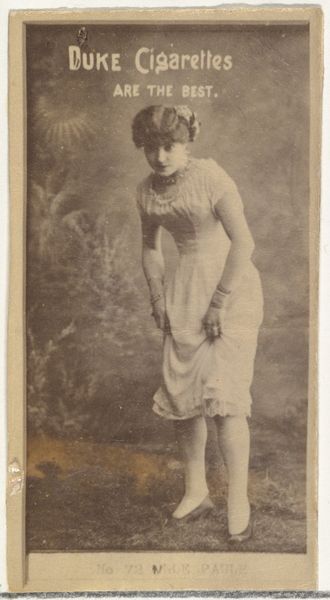
Ida Mulle, from the Actors and Actresses series (N171) for Gypsy Queen Cigarettes 1886 - 1890
0:00
0:00
drawing, print, photography, collotype
#
portrait
#
drawing
# print
#
photography
#
collotype
#
19th century
Dimensions: sheet: 2 11/16 x 1 3/8 in. (6.9 x 3.5 cm)
Copyright: Public Domain
Curator: This collotype print comes to us from sometime between 1886 and 1890, made by Goodwin & Company as one of the Actors and Actresses series (N171) for Gypsy Queen Cigarettes. Editor: There's a striking vulnerability to this portrait, almost an innocence, despite the commercial context. The soft sepia tones add a layer of antique charm and her guarded gaze creates a feeling of intimate exposure. Curator: This was, in fact, a piece of calculated marketing strategy. The burgeoning mass culture commodified beauty and fame; figures such as Ida Mulle became desirable objects linked inextricably to the consumption of cigarettes. What does it mean to assign value and trade women like trading cards? Editor: Regardless of its context, technically speaking the composition uses very precise, symmetrical framing, focusing attention directly on her face. Her crossed arms draw attention to the delicacy of her hands and small ring. The lighting is undeniably romantic, casting the details in the image in sharp contrast to a muted backdrop, really focusing on the texture. Curator: Absolutely, and let’s remember what such careful compositional detail and idealization signifies during that time period. The emphasis on white, feminine beauty reinforced a racial and gendered hierarchy central to the era’s political power structure, not merely "a pretty picture". It implicitly posits a white woman as the archetypal figure of aspirational value. Editor: Yes, that can be reasonably said. But the execution of that intent isn't necessarily as reductive as its intent. We have sharp lines alongside blurry soft shading; what does that mean aesthetically? The interplay creates a strangely nuanced and captivating visual experience that adds richness to the portrait, creating movement despite the photograph's stillness. Curator: It is fascinating to examine these small objects which belie larger political and cultural anxieties surrounding gender, performance, and burgeoning capitalism in America. Editor: Ultimately, by paying attention to small details like her subtle smile or ring on her finger, the texture of the paper used for the print, it becomes clear that the portrait transcends its historical and cultural moment, presenting the viewer an ethereal beauty to consider beyond our social analysis.
Comments
No comments
Be the first to comment and join the conversation on the ultimate creative platform.
